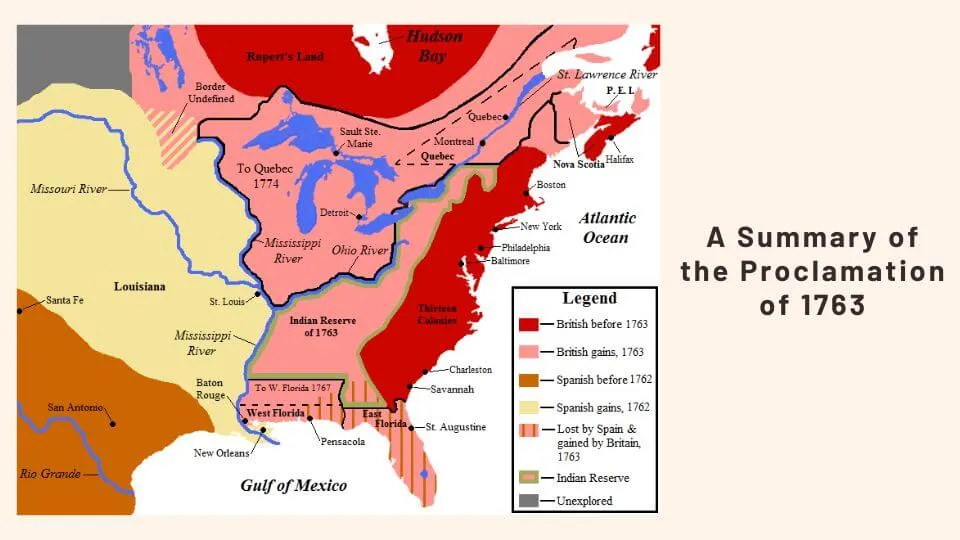
Map showing division of territory in the Proclamation of 1763. Source: HISTORYinCHARTS
¨The greatest threat to Native Americans’ livelihood was encroaching white settlers that forcefully took their lands, usually in violation of prior treaties. Because of this most Native American nations opted to fight on the side of the British rather than the United States during the American Revolution and War of 1812. The British had proved they were interested in protecting the Natives with policies such as the Royal Proclamation of 1763 and the proposal to create an Indian Buffer State in the Great Lakes region during the War of 1812”. (History of Charts)

Map showing division of territory in the Proclamation of 1763. Source: HISTORYinCHARTS
The Proclamation of 1763 also forbade British colonists from settling the lands outside of the newly-established provinces or current existing colonies. This meant that all of the Indian Reserve was off limits to settlement.
“Meanwhile the United States had proved uninterested in honoring prior treaties claiming to protect natives from white settlers. It is therefore unsurprising that the majority of natives chose to fight against the United States”. (History in Charts)
The lingering animosity from these prior conflicts as well as the frontier violence all contributed to the sentiment that brought the Indian Removal Act of 1830.